SUMMARY CMI
APO-OLMESARTAN/AMLODIPINE/HCTZ
Consumer Medicine Information (CMI) summary
The full CMI on the next page has more details. If you are worried about using this medicine, speak to your doctor or pharmacist.
1. Why am I taking APO-OLMESARTAN/AMLODIPINE/HCTZ?
APO-OLMESARTAN/AMLODIPINE/HCTZ contains the active ingredient olmesartan medoxomil, amlodipine (as besilate) and hydrochlorothiazide. APO-OLMESARTAN/AMLODIPINE/HCTZ is taken to treat high blood pressure.
For more information, see Section 1. Why am I taking APO-OLMESARTAN/AMLODIPINE/HCTZ? in the full CMI.
2. What should I know before I take APO-OLMESARTAN/AMLODIPINE/HCTZ?
Do not take if you have ever had an allergic reaction to APO-OLMESARTAN/AMLODIPINE/HCTZ or any of the ingredients listed at the end of the CMI.
Talk to your doctor if you have any other medical conditions, take any other medicines, or are pregnant or plan to become pregnant or are breastfeeding.
For more information, see Section 2. What should I know before I take APO-OLMESARTAN/AMLODIPINE/HCTZ? in the full CMI.
3. What if I am taking other medicines?
Some medicines may interfere with APO-OLMESARTAN/AMLODIPINE/HCTZ and affect how it works.
A list of these medicines is in Section 3. What if I am taking other medicines? in the full CMI.
4. How do I take APO-OLMESARTAN/AMLODIPINE/HCTZ?
- Follow all directions given to you by your doctor or pharmacist carefully. Your doctor or pharmacist will tell you which APO-OLMESARTAN/AMLODIPINE/HCTZ tablet you will need to take each day.
- Swallow APO-OLMESARTAN/AMLODIPINE/HCTZ tablet whole with a full glass of water.
- Take your tablet at the same time each day.
More instructions can be found in Section 4. How do I take APO-OLMESARTAN/AMLODIPINE/HCTZ? in the full CMI.
5. What should I know while taking APO-OLMESARTAN/AMLODIPINE/HCTZ?
| Things you should do |
|
| Things you should not do |
|
| Driving or using machines |
|
| Drinking alcohol |
|
| Looking after your medicine |
|
For more information, see Section 5. What should I know while taking APO-OLMESARTAN/AMLODIPINE/HCTZ? in the full CMI.
6. Are there any side effects?
Less serious side effects may include dizziness, light-headedness, cough, headache, nausea, vomiting, stomach pain, diarrhoea, tiredness, 'flu-like' symptoms, runny/blocked nose, sore throat, difficulty swallowing, back pain, blurred vision, sleep or mood disturbances, skin rash, flushing, swelling of the face or body and urinary infection. Serious side effects may include skin rash, yellowing of the eyes, dry mouth, swelling of the face, lips tongue or throat causing difficulty swallowing or breathing, muscle pain or weakness and chest pain.
For more information, including what to do if you have any side effects, see Section 6. Are there any side effects? in the full CMI.
FULL CMI
APO-OLMESARTAN/AMLODIPINE/HCTZ
Active ingredients: olmesartan medoxomil, amlodipine (as besilate) and hydrochlorothiazide
Consumer Medicine Information (CMI)
This leaflet provides important information about taking APO-OLMESARTAN/AMLODIPINE/HCTZ. You should also speak to your doctor or pharmacist if you would like further information or if you have any concerns or questions about taking APO-OLMESARTAN/AMLODIPINE/HCTZ.
Where to find information in this leaflet:
1. Why am I taking APO-OLMESARTAN/AMLODIPINE/HCTZ?
2. What should I know before I take APO-OLMESARTAN/AMLODIPINE/HCTZ?
3. What if I am taking other medicines?
4. How do I take APO-OLMESARTAN/AMLODIPINE/HCTZ?
5. What should I know while taking APO-OLMESARTAN/AMLODIPINE/HCTZ?
6. Are there any side effects?
7. Product details
1. Why am I taking APO-OLMESARTAN/AMLODIPINE/HCTZ?
APO-OLMESARTAN/AMLODIPINE/HCTZ contains the active ingredients olmesartan medoxomil, amlodipine (as besilate) and hydrochlorothiazide.
APO-OLMESARTAN/AMLODIPINE/HCTZ is used to treat high blood pressure which is sometimes called hypertension.
Everyone has blood pressure. This pressure helps push blood all around your body. Your blood pressure changes at different times of the day, depending on how busy or worried you are. You have hypertension (high blood pressure) when your blood pressure stays higher than is needed, even when you are calm and relaxed.
There are usually no symptoms of hypertension. The only way of knowing that you have hypertension is to have your blood pressure checked on a regular basis. If high blood pressure is not treated it can lead to serious health problems, including stroke, heart disease and kidney failure.
How APO-OLMESARTAN/AMLODIPINE/HCTZ works
APO-OLMESARTAN/AMLODIPINE/HCTZ contains olmesartan medoxomil, which belongs to a group of medicines known as angiotensin-II receptor antagonists. Angiotensin-II is a substance produced in the body which causes blood vessels to tighten.
APO-OLMESARTAN/AMLODIPINE/HCTZ blocks the action of angiotensin-II and therefore relaxes your blood vessels. This helps lower your blood pressure.
APO-OLMESARTAN/AMLODIPINE/HCTZ also contains amlodipine besilate, a calcium channel blocker. This reduces the movement of calcium into the cells of the heart and blood vessels. This also helps to lower blood pressure as it relaxes the blood vessels and increases the supply of blood and oxygen to the heart.
APO-OLMESARTAN/AMLODIPINE/HCTZ also contains hydrochlorothiazide, a diuretic which reduces the amount of fluid in the body. This also helps to lower blood pressure.
Your doctor may have prescribed APO-OLMESARTAN/AMLODIPINE/HCTZ for another reason. Ask your doctor if you have any questions about why APO-OLMESARTAN/AMLODIPINE/HCTZ has been prescribed for you.
APO-OLMESARTAN/AMLODIPINE/HCTZ is not addictive.
2. What should I know before I take APO-OLMESARTAN/AMLODIPINE/HCTZ?
Warnings
Do not take APO-OLMESARTAN/AMLODIPINE/HCTZ if:
- You are allergic to
- olmesartan,
- amlodipine besilate, medicines belonging to a group of chemicals called dihydropyridines used to treat blood pressure and other heart problems,
- hydrochlorothiazide, a diuretic,
- or any other ingredients listed at the end of this leaflet or other sulfonamide-derived drugs.
Symptoms of an allergic reaction to APO-OLMESARTAN/AMLODIPINE/HCTZ may include skin rash, itchiness, shortness of breath, swelling of the face, lips or tongue, muscle pain or tenderness or joint pain. - You have serious problems with your kidneys.
- You have serious problems with your liver.
- You have had recent serious heart problems.
- You have low potassium or sodium levels in the blood.
- You have high calcium or uric acid levels in the blood.
- You have diabetes and are taking a medicine called aliskiren to reduce blood pressure.
- You are pregnant or breast-feeding.
- The expiry date on the pack has passed or if the packaging is torn or shows signs of tampering.
Tell your doctor if:
- You have allergies to any other medicines or any other substances, such as foods, preservatives or dyes.
- You have or have had any other medical conditions, especially the following:
- Kidney problems.
- Liver problems.
- Heart problems.
- Diabetes.
- Excessive vomiting or diarrhoea recently.
- High levels of potassium in your blood.
- Problems with your adrenal glands (small glands above the kidneys).
- Systemic lupus erythematosus, a disease affecting the skin, joints and kidneys.
- Gout. - You are following a very low salt diet.
- You are or intend to become pregnant or plan to breastfeed.
- You are taking potassium supplements, potassium-sparing agents, potassium-containing salt substitutes or other medicines that may increase serum potassium (e.g., trimethoprim-containing products).
- You have skin cancer or if you develop a new skin lesion during treatment. Treatment with hydrochlorothiazide, particularly long-term use with high doses, may increase the risk of some types of skin and lip cancer (non-melanoma skin cancer). Discuss with your doctor how to protect your skin from sun exposure, and avoid artificial tanning.
During treatment, you may be at risk of developing certain side effects. It is important you understand these risks and how to monitor for them. See additional information under Section 6. Are there any side effects?
Pregnancy and breastfeeding
Do not take APO-OLMESARTAN/AMLODIPINE/HCTZ if you are pregnant or breastfeeding.
APO-OLMESARTAN/AMLODIPINE/HCTZ may enter your womb or it may pass into the breast milk and there is the possibility that your baby may be affected.
If pregnancy is discovered APO-OLMESARTAN/AMLODIPINE/HCTZ should be discontinued as soon as possible.
Use in children
The safety and effectiveness of APO-OLMESARTAN/AMLODIPINE/HCTZ in children has not been established.
3. What if I am taking other medicines?
Tell your doctor or pharmacist if you are taking any other medicines, including any medicines, vitamins or supplements that you buy without a prescription from your pharmacy, supermarket or health food shop.
Some medicines and APO-OLMESARTAN/AMLODIPINE/HCTZ may interfere with each other. These include:
- Other medicines to treat high blood pressure.
- Digitalis glycosides, medicines used to treat heart problems.
- Medicines used to treat angina, such as diltiazem.
- Antiarrhythmics which treat irregular heartbeats.
- Non-steriod anti-inflammatory drugs (NSAIDs) or COX-2 inhibitors, medicines used to relieve pain, swelling and other symptoms of inflammation including arthritis.
- Antacids, medicines used to treat heartburn and indigestion.
- Simvastatin, a medicine used to help lower cholesterol levels.
- Potassium supplements or potassium-containing salt substitutes.
- Other medicines that may increase serum potassium (e.g. trimethoprim-containing products).
- Calcium containing supplements.
- Lithium or antidepressants medicines.
- Some antibiotics, such as erythromycin or rifampicin.
- Some antifungals, such as ketoconazole or itraconazole.
- Anti-proteases, medicines used to treat HIV infection such as ritonavir.
- Other diuretics, also known as fluid or water tablets.
- Insulin and tablets used to treat diabetes.
- Medicines which lower your immune system, such as corticosteroids, ciclosporin, tacrolimus and cytotoxic medicines used to treat cancer (including radiation therapy).
- Alcohol.
- Laxatives, medicines used to treat constipation.
- Medicines used to relieve pain.
- Medicines used to treat epilepsy.
- Muscle relaxants.
- Cholestyramine and colestipol, used to treat high cholesterol.
- St John's Wort.
- Grapefruit and grapefruit juice.
- Medicines used to treat gout, such as allopurinol.
- Medicines used to treat Parkinson's Disease, such as amantadine.
- Any medicines containing aliskiren.
- Any medicines containing colesevelam.
These medicines may be affected by APO-OLMESARTAN/AMLODIPINE/HCTZ, or may affect how well it works. You may need different amounts of your medicine, or you may need to take different medicines.
Check with your doctor or pharmacist if you are not sure about what medicines, vitamins or supplements you are taking and if these affect APO-OLMESARTAN/AMLODIPINE/HCTZ.
4. How do I take APO-OLMESARTAN/AMLODIPINE/HCTZ?
Follow all directions given to you by your doctor or pharmacist carefully.
They may differ from the information contained in this leaflet.
Your doctor or pharmacist will tell you which
APO-OLMESARTAN/AMLODIPINE/HCTZ tablet you will need to take each day. This depends on your condition and whether or not you are taking any other medicines.
If you do not understand the instructions on the box, ask your doctor or pharmacist for help.
How much to take
- The dose of APO-OLMESARTAN/AMLODIPINE/HCTZ is one tablet to be taken once a day.
How to take APO-OLMESARTAN/AMLODIPINE/HCTZ
- Swallow APO-OLMESARTAN/AMLODIPINE tablet whole with a full glass of water.
- Do not chew tablet.
When to take APO-OLMESARTAN/AMLODIPINE/HCTZ
- Take APO-OLMESARTAN/AMLODIPINE/HCTZ at about the same time each day, with or without food.
Taking your tablet at the same time each day will have the best effect. It will also help you remember when to take the tablet. It does not matter whether you take with or without food.
How long to take APO-OLMESARTAN/AMLODIPINE/HCTZ
APO-OLMESARTAN/AMLODIPINE/HCTZ helps control your condition, but it does not cure it. Therefore, you must take APO-OLMESARTAN/AMLODIPINE/HCTZ every day. Continue taking your medicine for as long as your doctor tells you.
If you forget to take APO-OLMESARTAN/AMLODIPINE/HCTZ
APO-OLMESARTAN/AMLODIPINE/HCTZ should be taken regularly at the same time each day. If it is almost time for your next dose, skip the dose you missed and take your next dose when you are meant to. Otherwise, take it as soon as you remember and then go back to taking your medicine as you would normally.
Do not take a double dose to make up for the dose you missed.
This may increase the chance of you getting an unwanted side effect.
If you take too much APO-OLMESARTAN/AMLODIPINE/HCTZ
If you think that you have taken too much APO-OLMESARTAN AMLODIPINE HCTZ, you may need urgent medical attention.
You should immediately:
- phone the Poisons Information Centre
(by calling 13 11 26), or - contact your doctor, or
- go to the Emergency Department at your nearest hospital.
You should do this even if there are no signs of discomfort or poisoning.
Keep telephone numbers for these contacts handy.
If you take too much APO-OLMESARTAN/AMLODIPINE/HCTZ, you may feel light-headed, dizzy, or you may faint. You may also have nausea, drowsiness, muscle spasm and a fast heartbeat.
Excess fluid may accumulate in your lungs (pulmonary oedema) causing shortness of breath that may develop up to 24-48 hours after intake.
5. What should I know while taking APO-OLMESARTAN/AMLODIPINE/HCTZ?
Things you should do
- If you are about to be started on any new medicine, tell your doctor, dentist or pharmacist that you are taking APO-OLMESARTAN/AMLODIPINE/HCTZ.
- Make sure you drink enough water during exercise and hot weather when you are taking APO-OLMESARTAN/AMLODIPINE/HCTZ, especially if you sweat a lot. If you do not drink enough water while taking APO-OLMESARTAN/AMLODIPINE/HCTZ, you may feel light-headed or sick. This is because your blood pressure is dropping suddenly. If you continue to feel unwell, tell your doctor.
- If you feel light-headed, dizzy or faint when getting out of bed or standing up, get up slowly. Standing up slowly, especially when you get up from bed or chairs, will help your body get used to the change in position and blood pressure. If this problem continues or gets worse, talk to your doctor.
- If you plan to have surgery that needs a general anaesthetic, tell your doctor or dentist that you are taking APO-OLMESARTAN/AMLODIPINE/HCTZ. Your blood pressure may suddenly drop.
- If you are about to have any blood tests tell your doctor that you are taking APO-OLMESARTAN/AMLODIPINE/HCTZ. APO-OLMESARTAN/AMLODIPINE/HCTZ may interfere with the results of some tests.
- Tell your doctor if photosensitivity reaction occurs during your treatment.
- Have your blood pressure checked when your doctor says, to make sure APO-OLMESARTAN/AMLODIPINE/HCTZ is working.
- Go to your doctor regularly for a check-up. Your doctor may occasionally do a blood test to check your potassium levels and see how your kidneys are working.
Call your doctor straight away if:
- You have excess vomiting and/or diarrhoea while taking APO-OLMESARTAN/AMLODIPINE/HCTZ. You may lose too much water and salt and your blood pressure may drop too much. You may also have dry mouth, weakness, drowsiness, confusion, muscle pain or cramps and seizures. Tell your doctor immediately if you experience any of these symptoms.
- You feel light-headed or dizzy after taking your first dose of APO-OLMESARTAN/AMLODIPINE/HCTZ, or when your dose is increased.
- You become pregnant while taking APO-OLMESARTAN/AMLODIPINE/HCTZ.
- You experience acute onset of decreased visual acuity or ocular pain. These could be symptoms of fluid accumulation in the vascular layer of the eye (choroidal effusion) or an increase of pressure in your eye and can happen within hours to weeks of taking APO-OLMESARTAN/AMLODIPINE/HCTZ. This can lead to permanent vision loss, if not treated.
- You experience any fever, severe shortness of breath, breathing faster than normal, difficulty breathing, slightly blue fingertips and lips after taking APO-OLMESARTAN/AMLODIPINE/HCTZ. Stop the medication and seek medical attention immediately.
Remind any doctor, dentist or pharmacist you visit that you are taking APO-OLMESARTAN/AMLODIPINE/HCTZ.
Things you should not do
- Do not give APO-OLMESARTAN/AMLODIPINE/HCTZ to anyone else, even if they have the same condition as you.
- Do not take APO-OLMESARTAN/AMLODIPINE/HCTZ to treat any other complaints unless your doctor or pharmacist tells you to.
- Do not stop taking APO-OLMESARTAN/AMLODIPINE/HCTZ, or lower the dosage, without checking with your doctor.
Things that would be helpful for your blood pressure
Some self-help measures suggested below may help your condition. Talk to your doctor or pharmacist about these measures and for more information.
- Alcohol - your doctor may advise you to limit alcohol intake.
- Weight - your doctor may suggest losing some weight to help lower your blood pressure and help lessen the amount of work your heart has to do. Some people may need a dietician's help to lose weight.
- Diet - eat a healthy diet which includes plenty of vegetables, fruit, bread (preferably wholegrain), cereals and fish. Also eat less sugar and fat (especially saturated fat) which includes sausages, fatty meats, full cream dairy products, biscuits, cakes, pastries, chocolates, chips and coconut. Monounsaturated and polyunsaturated fats from olive oil, canola oil, avocado and nuts are beneficial in small quantities.
- Salt - your doctor may advise you to watch the amount of salt in your diet. To reduce your salt intake, you should avoid using salt in cooking or at the table and avoid cooked or processed foods containing high sodium (salt) levels.
- Exercise - regular exercise, maintained over the long term, helps to reduce blood pressure and helps get heart fitter. Regular exercise also improves your blood cholesterol levels, help reduce your weight and stress levels, and improves your sleep, mood and ability to concentrate. However, it is important not to overdo it. Walking is good exercise, but try to find a route that is reasonably flat. Before starting any exercise, ask your doctor about the best kind of program for you.
- Smoking - your doctor may advise you to stop smoking or at least cut down. There are enormous benefits to be gained from giving up smoking. There are many professionals, organisations and strategies to help you quit. Ask your doctor or pharmacist for further information and advice.
Driving or using machines
Be careful before you drive or use any machines or tools until you know how APO-OLMESARTAN/AMLODIPINE/HCTZ affects you.
As with other medicines in this class, APO-OLMESARTAN/AMLODIPINE/HCTZ may cause dizziness, light-headedness or tiredness in some people. Make sure you know how you react to APO-OLMESARTAN/AMLODIPINE/HCTZ before you drive a car, operate machinery, or do anything else that could be dangerous if you are dizzy or light-headed. If this occurs do not drive.
Drinking alcohol
Tell your doctor if you drink alcohol.
Your doctor may advise you to limit your alcohol intake.
If you drink alcohol, dizziness or light-headedness may be worse.
Looking after your medicine
- Keep your tablets in the box until it is time to take them.
If you take the tablets out of the box they will not keep well. - Keep your tablets in a cool dry place where the temperature stays below 25°C.
Store it in a cool dry place away from moisture, heat or sunlight; for example, do not store it:
- in the bathroom or near a sink, or
- in the car or on window sills.
- Heat and dampness can destroy some medicines.
Follow the instructions on the box on how to take care of your medicine properly.
Keep it where young children cannot reach it.
Getting rid of any unwanted medicine
If your doctor tells you to stop taking APO-OLMESARTAN/AMLODIPINE/HCTZ or it is out of date, take it to any pharmacy for safe disposal.
Do not take this medicine after the expiry date.
6. Are there any side effects?
All medicines can have side effects. If you do experience any side effects, most of them are minor and temporary. However, some side effects may need medical attention.
APO-OLMESARTAN/AMLODIPINE/HCTZ helps most people with high blood pressure, but it may have unwanted side effects in a few people. If you are over 65 years of age you may have an increased chance of getting side effects.
See the information below and, if you need to, ask your doctor or pharmacist if you have any further questions about side effects.
Less serious side effects
| Less serious side effects | What to do |
Head and nervous system-related:
| These are less serious side effects and are generally mild. Speak to your doctor if you have any of these less serious side effects and they worry you. |
Serious side effects
| Serious side effects | What to do |
| Call your doctor as soon as possible, if you notice any of these serious side effects. You may need medical attention. Serious side effects are rare. |
| Stop taking APO-OLMESARTAN/AMLODIPINE/HCTZ and call your doctor immediately or go straight to the Emergency Department at your nearest hospital if you notice any of these very serious side effects. Serious side effects are rare. |
Tell your doctor or pharmacist if you notice anything else that may be making you feel unwell.
Other side effects not listed here may occur in some people.
Reporting side effects
After you have received medical advice for any side effects you experience, you can report side effects to the Therapeutic Goods Administration online at www.tga.gov.au/reporting-problems. By reporting side effects, you can help provide more information on the safety of this medicine.
Always make sure you speak to your doctor or pharmacist before you decide to stop taking any of your medicines.
7. Product details
This medicine is only available with a doctor's prescription.
What APO-OLMESARTAN/AMLODIPINE/HCTZ contains
| Active ingredient (main ingredient) | APO-OLMESARTAN/AMLODIPINE/ HCTZ 20/5/12.5 mg contains 20 mg olmesartan medoxomil, 5 mg amlodipine as besilate and 12.5 mg hydrochlorothiazide. APO-OLMESARTAN/AMLODIPINE/ HCTZ 40/5/12.5 mg contains 40 mg of olmesartan medoxomil, 5 mg amlodipine as besilate and 12.5 mg hydrochlorothiazide. APO-OLMESARTAN/AMLODIPINE/ HCTZ 40/5/25 mg contains 40 mg of olmesartan medoxomil, 5 mg amlodipine as besilate and 25 mg hydrochlorothiazide. APO-OLMESARTAN/AMLODIPINE/ HCTZ 40/10/12.5 mg contains 40 mg of olmesartan medoxomil, 10 mg amlodipine as besilate and 12.5 mg hydrochlorothiazide. APO-OLMESARTAN/AMLODIPINE/ HCTZ 40/10/25 mg contains 40 mg of olmesartan medoxomil, 10 mg amlodipine as besilate and 25 mg hydrochlorothiazide. |
| Other ingredients (inactive ingredients) |
|
| Potential allergens |
|
This medicine does not contain gluten, sucrose, tartrazine or any other azo dyes.
Do not take this medicine if you are allergic to any of these ingredients.
What APO-OLMESARTAN/AMLODIPINE/HCTZ looks like
APO-OLMESARTAN/AMLODIPINE/HCTZ 20/5/12.5*
Off white to peach, round, bevel-edged, film-coated tablet debossed with “OC1” on one side and plain on other side. AUST R 312002.
APO-OLMESARTAN/AMLODIPINE/HCTZ 40/5/12.5*
Light yellow, round, bevel-edged, film-coated tablet debossed with “OC2” on one side and plain on other side. AUST R 312010.
APO-OLMESARTAN/AMLODIPINE/HCTZ 40/5/25*
Light yellow, oval, bevel-edged, film-coated tablet debossed with “OC3” on one side and plain on other side. AUST R 312007.
APO-OLMESARTAN/AMLODIPINE/HCTZ 40/10/12.5*
Brick red, round, bevel-edged, film-coated tablets debossed with “OC4” on one side and plain on other side.
AUST R 312004.
APO-OLMESARTAN/AMLODIPINE/HCTZ 40/10/25*
Brick red, oval, bevel-edged, film-coated tablets debossed with “OC5” on one side and plain on other side.
AUST R 311999.
APO-OLMESARTAN/AMLODIPINE/HCTZ is available in blister packs of 10 or 30 tablets*.
*Not all strengths and pack sizes may be available.
Who distributes APO-OLMESARTAN/AMLODIPINE/HCTZ
Arrotex Pharmaceuticals Pty Ltd
15-17 Chapel Street
Cremorne
VIC 3121
www.arrotex.com.au
This leaflet was prepared in January 2025.
Published by MIMS March 2025

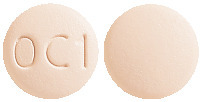
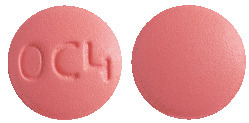
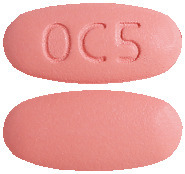
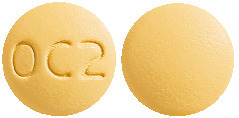
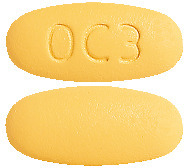
 Adverse events are listed below by system organ class. Frequencies are defined as: common (≥ 1/100 to < 1/10); uncommon (≥ 1/1,000 to < 1/100); rare (≥ 1/10,000 to < 1/1,000); very rare (< 1/10,000).
Adverse events are listed below by system organ class. Frequencies are defined as: common (≥ 1/100 to < 1/10); uncommon (≥ 1/1,000 to < 1/100); rare (≥ 1/10,000 to < 1/1,000); very rare (< 1/10,000). Other adverse experiences which were not clearly dose related but which were reported with an incidence greater than 1.0% in placebo controlled clinical trials include the following. See Table 3.
Other adverse experiences which were not clearly dose related but which were reported with an incidence greater than 1.0% in placebo controlled clinical trials include the following. See Table 3. The following events occurred in ≤ 1% but > 0.1% of patients in controlled clinical trials or under conditions of open trials or marketing experience where a causal relationship is uncertain; they are listed to alert the physician to a possible relationship:
The following events occurred in ≤ 1% but > 0.1% of patients in controlled clinical trials or under conditions of open trials or marketing experience where a causal relationship is uncertain; they are listed to alert the physician to a possible relationship: There were no apparent differences in terms of seated diastolic blood pressure (SeDBP) or seated systolic blood pressure (SeSBP) reductions in black and non-black patients treated with olmesartan medoxomil, amlodipine and hydrochlorothiazide tablets.
There were no apparent differences in terms of seated diastolic blood pressure (SeDBP) or seated systolic blood pressure (SeSBP) reductions in black and non-black patients treated with olmesartan medoxomil, amlodipine and hydrochlorothiazide tablets.
 In a second double-blind, randomised, parallel-group study [CS8635-A-E302] in 2690 patients (99.9% Caucasian patients), treatment with olmesartan medoxomil, amlodipine and hydrochlorothiazide tablets (20 mg/5 mg/12.5 mg, 40 mg/5 mg/12.5 mg, 40 mg/5 mg/25 mg, 40 mg/10 mg/12.5 mg, 40 mg/10 mg/25 mg) resulted in significantly greater reductions in diastolic and systolic blood pressure compared to the corresponding dual combinations, olmesartan medoxomil 20 mg plus amlodipine 5 mg, olmesartan medoxomil 40 mg plus 5 mg amlodipine and olmesartan medoxomil 40 mg plus 10 mg amlodipine, respectively, after 10 weeks of treatment.
In a second double-blind, randomised, parallel-group study [CS8635-A-E302] in 2690 patients (99.9% Caucasian patients), treatment with olmesartan medoxomil, amlodipine and hydrochlorothiazide tablets (20 mg/5 mg/12.5 mg, 40 mg/5 mg/12.5 mg, 40 mg/5 mg/25 mg, 40 mg/10 mg/12.5 mg, 40 mg/10 mg/25 mg) resulted in significantly greater reductions in diastolic and systolic blood pressure compared to the corresponding dual combinations, olmesartan medoxomil 20 mg plus amlodipine 5 mg, olmesartan medoxomil 40 mg plus 5 mg amlodipine and olmesartan medoxomil 40 mg plus 10 mg amlodipine, respectively, after 10 weeks of treatment. Amlodipine besilate has the following structural formula:
Amlodipine besilate has the following structural formula: Hydrochlorothiazide has the following structural formula:
Hydrochlorothiazide has the following structural formula:
